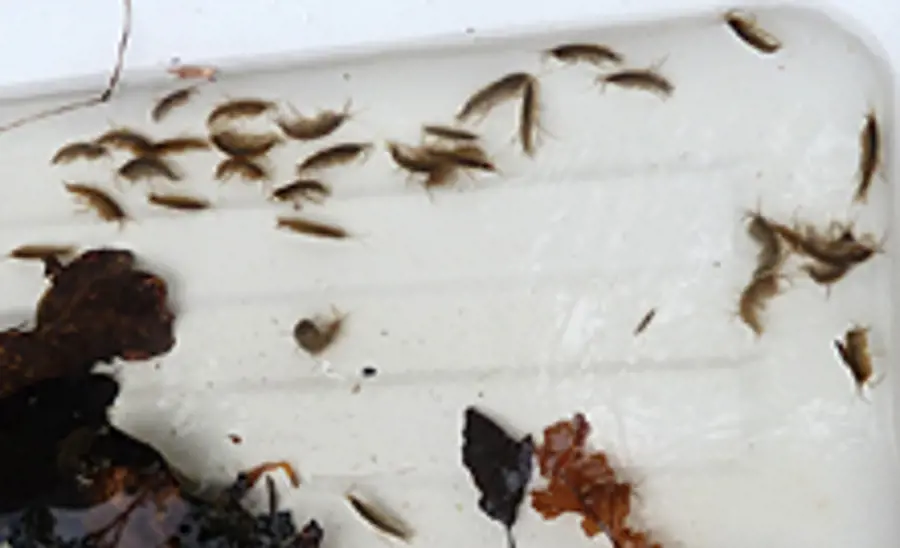In situ feeding assay with gammarids

Test organism
- Gammarus fossarum
Detectable effects (impact)
- Inhibition or stimulation of the feeding activity of gammarids
Test principle
- Gammarids are individually deployed in cages in the stream above and below a point source. Preconditioned leaf discs serve as food.
- After a week, the cages are removed and the gammarids and leaf discs are dried.
- The feeding rate is then determined from the dry weight of the gammarids and leaves before and after exposure.
Test duration
- Min. 7 days
Relevance
- Gammarids are detritivores that primarily feed on coarse particulate organic matter, but also have other food sources such as algae or animals (MacNeil et al. 1997). They play an important role in detritus processing in streams and serve as important prey for fish (Andersen et al. 1993).
- The inhibition of the feeding activity is a general stress response of organisms and can be induced by a variety of stressors in gammarids (Maltby et al. 2002).
- A reduced feeding activity can effect the development, growth and reproduction of animals (Naylor et al. 1989). In addition, effects on the level of communities and ecosystems are possible such as such as effects on the detritus processing or the total leaf decomposition.
- Intrinsic and extrinsic factors can influence the feeding activity of gammarids: examples include parasites, origin of the population and body size (intrinsic) as well as temperature, dissolved oxygen concentration and pH (extrinsic).
- To be able to evaluate effects of wastewater discharges, these parameters should be well characterized. A comparison of measurements upstream and downstream of the discharge should be well possible because of the similar conditions.
- In earlier studies, a reduction of the feeding activity of gammarids was measured downstream of wastewater treatment plants (Bundschuh et al. 2011).
Literature
- Andersen TH, Friberg N, Hansen HO, Iversen TM, Jacobsen D, Krojgaard L. 1993. The effects of introduction of brown trout (Salmo trutta L.) on Gammarus pulex L. drift density in two fishless Danish streams. Arch Hydrobiol 126:361–371.
- Bundschuh M, Pierstorf R, Schreiber WH, Schulz R, 2011. Positive effects of wastewater ozonation displayed by in situ bioassays in the receiving stream. Environmental Science and Technology 45:3774-3780.
- Bundschuh M, Zubrod JP, Kosol S, Maltby L, Stang C, Duester L, Schulz R, 2011. Fungal composition on leaves explains pollutant-mediated indirect effects on amphipod feeding. Aquatic Toxicology 104:32-37.
- MacNeil C, Dick JTA, Elwood RW (1997): The trophic ecology of freshwater Gammarus spp. (Crustacea:Amphipoda): Problems and Perspectives concerning the functional feeding group concept. Biological Reviews 72, 349-364
- Maltby L, Clayton SA, Wood RM, McLoughlin N, 2002. Evaluation of the Gammarus pulex in situ feeding assay as a biomonitor of water quality: robustness, responsiveness, and relevance. Environmental Toxicology and Chemistry 21:361-368.
- Naylor C, Maltby L, Calow P, 1989. Scope for growth in Gammarus pulex, a freshwater benthic detritivore. Hydrobiologia 188-189:517-523.